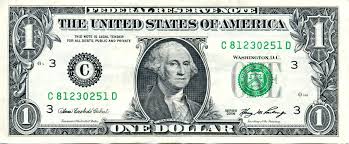What is a Put Option? When you need to Purchase Put Options vs call options for different situations?
A put option. As per the title of this article, is a type of derivative instrument in finance that gives you the right to sell a specific security at a certain price, known as the strike price. A call option, is something that is just the opposite of this, and that gives you the right to buy a stock at a specific strike price. Throughout this blog post, I’ll show you examples and even charts that demonstrate what these are in more detail, and of how you can properly use these to both increase and decrease leverage in a portfolio, depending on your financial goals and needs. Generally, I recommend speculating and avoiding things like options and derivatives as much as possible, but in certain situations, something like writing covered call options on your portfolio can actually reduce risk and increase income, and engaging in the buying of put options against your portfolio can effectively hedge a $1,000,000.00 portfolio in full for as little as $20,000 to $50,000, so depending on your risk tolerance, options are not always as bad as they seem. For more information, be sure to comment down below or subscribe to our blog for additional details and information.
Other types of popular options strategies include the following:
Put Options
call options
 covered calls
covered calls
covered puts
cost collars
iron condors
zero cost collars
Theta
Gamma
Delta Based Strategies
Portfolio Insurance
| Related Posts |
|---|
And much more, read on or subscribe for more details and information.
What is a Put Option? Why Options Are Difficult, And The Gist of What a Put Option Actually Does
So, in short, a put option is the right to sell. For someone reading this with only a basic understanding of finance, this is going to make literally zero sense, but let me try to break this down for you. A put option is the right to sell, and a call option is the right to buy, this is useful to have as a contract because if a stock plummets, you can maintain your right to sell at a higher price, and vice versa for a call option. Let’s look at an example.
You buy a put option on Apple with the right to sell for $200
Apple falls to a value of $190 per share. You can now purchase Apple on the open market for $190, and use your OPTION to sell, or PUT it on a buyer, and sell it for $200, giving you a $10 profit per share. Each option allows you the right to sell for a 100 share position, so with one put option in this case you could’ve profited $1,000, depending on what the premium on the option was.
With a call option, the concept remains the same, however it is the right to buy instead of the right to sell, so you are rooting for the stock to increase in value.
You buy a Call Option giving you the right to buy a security for $100 per share. The stock shoots up to $200 per share overnight, You can exercise your option to buy the stock for $100 from the seller, and then from here, can sell it on the secondary market for the Fair Market Value of $200 per share, giving you a $100 profit for 100 shares per option, so each option would yield a $10,000 profit in this case, minus whatever you paid for the premium (which can be as much as $200 to $2,000+ per option in order to buy in to this contract.)
Hopefully this makes at least a little bit of sense, options are one of those concepts that is very difficult to learn at first, but that once you grasp the concept, it will make perfect sense and you will feel like a genius as you stump everyone in the room around you.
Final Thoughts on Put Options, What is a Put Option and How Can You Properly Use One?
We can really get into a ton of information on options, such as writing covered call options, having portfolio insurance, and how using zero cost collars can allow you to almost completely mitigate risk within certain parts of an equity position in your portfolio, but I’m tired of writing so we’ll save that for another article in this blog at a future date. I hope this at least gave you a rudimentary understanding of options, and for more information, be sure to subscribe to our blog for more details and information, and to comment down below with your thoughts and opinions on the article, and we’ll get back to you within one business day with a response.
Cheers!
*Inflation Hedging.com
Sources:
https://www.bankrate.com/banking/cds/cd-rates/
https://money.cnn.com/data/markets/
Disclaimer: The opinions and documentation contained within this article and on this blog are the sole property of inflationhedging.com and are not to be copyrighted or reproduced in any manner, else legal action within the rights of the United States legal code could be use to obtain recompense. All articles and blog posts are the sole opinions of the writers of the blog, and are not necessarily in line with what exactly will work for you, you should consult a CPA, Tax Professional, or Financial Professional to determine what exact financial needs are in line with your interests. Also, from time to time, certain links on this website will be used to generate affiliate commissions, in order to support the health and growth of our website, health and business.


[…] way that one can get a negative balance in a brokerage account. To my non surprise, it looks like options and derivatives trading were clearly involved with this 20 year old kids suicide, in that this is […]